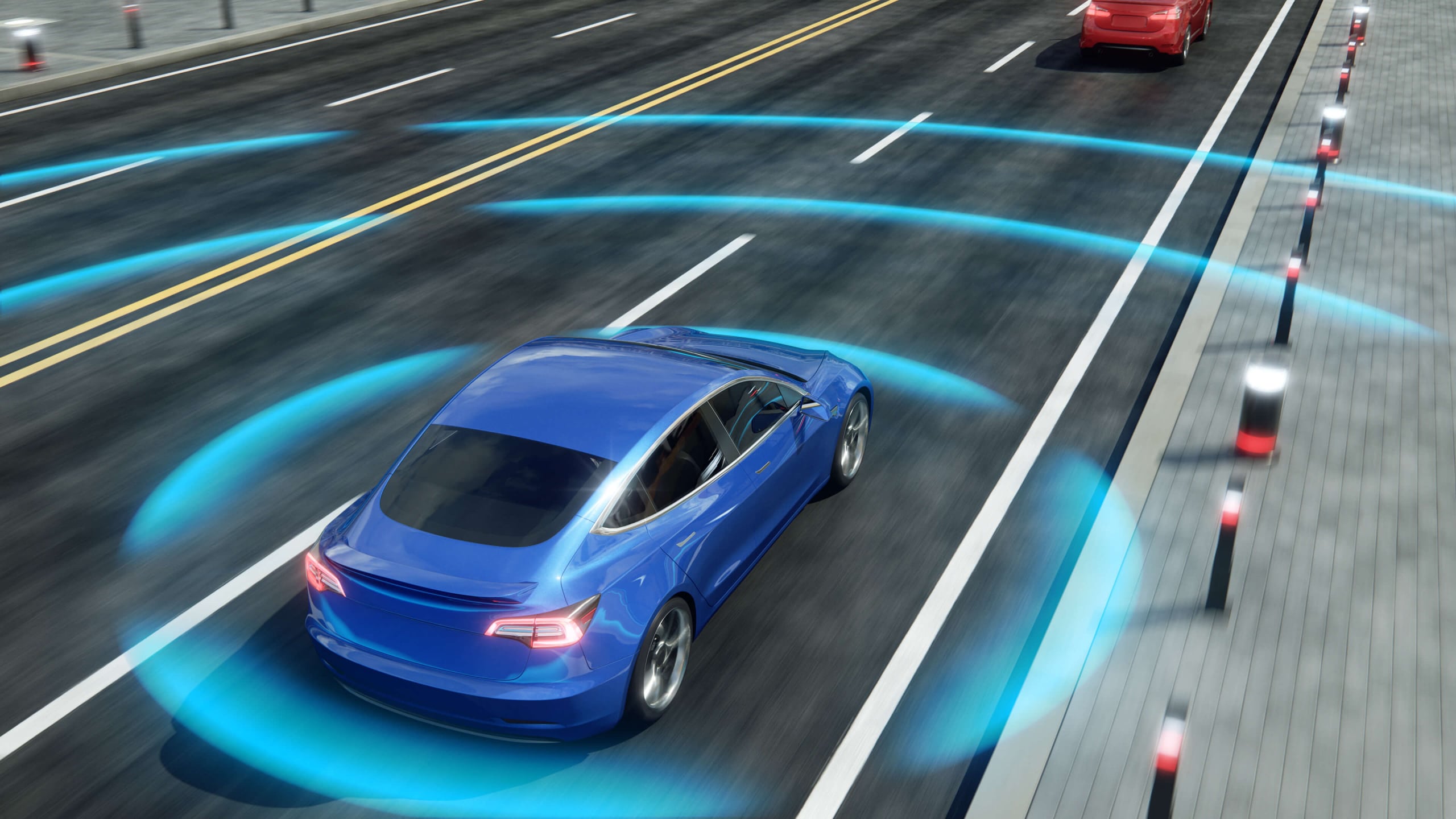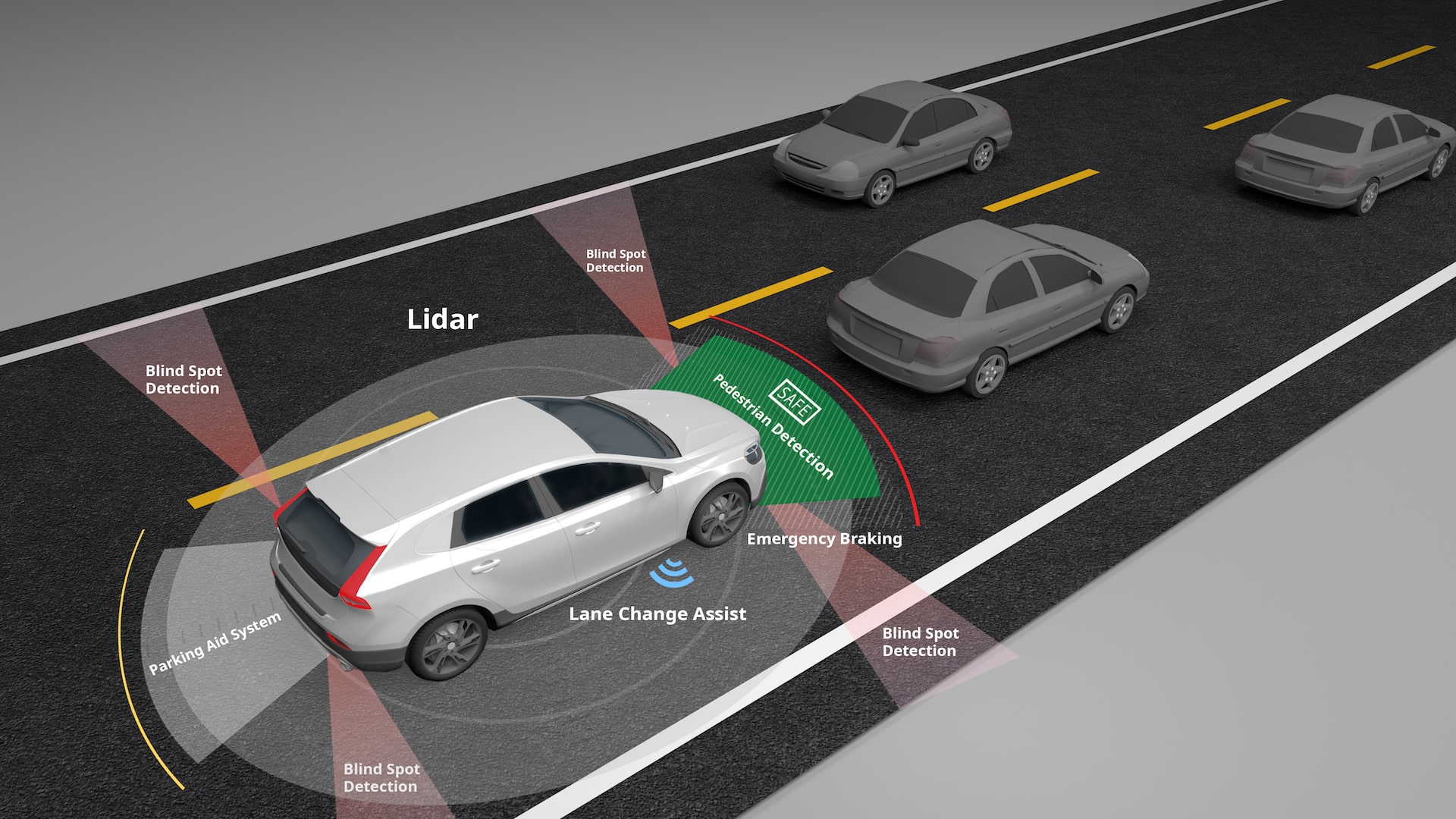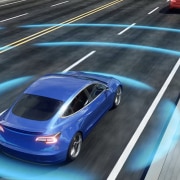How ADAS Lidar Enhance Automotive Safety

Road deaths occur every 24 seconds, according to the WHO. Over 46,000 people die in US collisions each year, and 4.4 million are severely wounded. The numbers are staggering, and not only in human terms. According to the Association for Safe International Road Travel, road collisions cost US residents $871 billion in 2014. Road collision mortality is 50% greater in the US than in Western Europe, Canada, Australia, and Japan. Therefore, the automobile industry uses lidar for better safety measures to lower these numbers.
Introduction to Modern ADAS Lidar
Lidar (Light Detection and Ranging) uses a pulsed laser to measure Earth’s distances. It calculates the time each pulse takes to return after reflecting off surfaces for strict 3D data on the environment’s shape and contour. Lidar technology in cars employs 850nm, 905nm, 940nm, and 1550nm wavelengths to infiltrate ranged atmospheric settings and provide high-resolution information for autonomous steering and safety systems.
Lidar complements ADAS (Advanced Driver Assistance Systems) with in-depth, real-time object and vehicle recognition data. ADAS Lidar systems utilize unusual algorithms to scrutinize light pulses. So, the car accurately executes multifarious tasks, including but not restricted to adaptive cruise control, lane-keeping assistance, and collision avoidance.
Operational Insights: How Lidar Powers ADAS
Working Mechanism of Lidar in ADAS
A vehicle’s Lidar sensors discharge thousands to millions of laser pulses per second at dissimilar surfaces. Pulses reflect and are collected by the sensor’s receiver. It measures round trip time. Time-of-flight (ToF) data is indispensable for the Lidar system to compute distances to a few centimeters and create a 3D point cloud of the environment.
Integration into ADAS
Lidar technology in cars empowers ADAS functionalities for automobile security and driver affluence. Notably, ADAS lidar provides broad 3D plots of conceivable hazards to collision avoidance systems, including people crossing the road and vehicle hindrances.
ADAS may gauge surrounding objects’ relative speed and trajectory using lidar’s accurate distance measurements and object identification competencies. It allows the vehicle to adapt to rapid driving environment changes. With safe distances from other cars, navigating lanes, and performing emergency maneuvers, lidar-based ADAS decreases accident risk.
Exploring the Types of Lidar Sensors

Solid-State Lidar
Solid-state lidar systems are notable for their small size, better durability, and removal of mechanical components that cause wear and tear. Unlike mechanical ones, Solid-state lidar sensors direct light beams using optical phased arrays or MEMS. Rapid, accurate measurements without moving components limit the system’s sensitivity to vibration and impact damage. It is required in automotive applications where dependability is important.
Since solid-state lidar is small, it can be fused into cars for aerodynamic designs without sacrificing aesthetics. The lack of moving parts also lowers production costs. It renders solid-state lidar a promising mass-market solution for autonomous and semi-autonomous cars. For complex driving settings and safety in ADAS and fully autonomous driving systems, solid-state lidar can classify objects with millimeter-level precision.
Electro-Mechanical Lidar
Electro-Mechanical Lidar is noted for its range and accuracy, and it projects laser pulses over a large region using spinning mirrors. Its 360-degree coverage is appropriate for driverless cars and raised mapping. This mechanical lidar type can scan areas with different degrees of resolution depending on the job due to its adjustable field of view. Electro-mechanical lidar systems may recognize objects several hundred meters away. Hence, it provides essential response times for high-speed autonomous navigation.
These systems are more durable and operationally long-lasting thanks to advances in engineering and materials science, despite the complexity and wear of moving components. The industry standard for distance measurements is electro-mechanical lidar, which can reach sub-centimeter accuracy. High-resolution maps and models of the physical world allow autonomous systems to make immediate conclusions based on complete environmental data.
The Role of Lidar Technology in Cars
Broadening Capabilities with ADAS Lidar
Lidar’s high-resolution, three-dimensional spatial data allows exact identification and tracking of objects and obstacles in different lighting and weather situations, unlike radar and cameras. Lidar’s ability to estimate vehicle distance and velocity, even at high speeds or in crowded traffic, renders adaptive cruise control faster and safer.
Blind-spot detection is enhanced by lidar’s broad field of vision and high resolution, which pinpoint cars in neighboring lanes more reliably and at longer distances. Lidar also improves pedestrian detection. Fine spatial resolution separates people from other objects in congested situations. It increases autonomous emergency braking system reaction times.
Future of Automated Driving
In 2022, 17 car manufacturers intended to employ lidar sensors in 21 models. Similarly, according to BIS research, the automotive lidar system-on-chip (SoC) market is estimated to reach $207.5 million by 2033 while growing at 24.30% from $29.3 million in 2024.
Basically, lidar technology in cars is also necessary for fully autonomous driving. Lidar establishes the framework for SAE Level 4 and 5 automation. High-resolution lidar point clouds provide exact vehicle localization in their surroundings for autonomous course planning and obstacle avoidance. The sensor may operate independently of ambient light.
Lidar with other sensors and AI algorithms creates an entire perception stack that can read dynamic driving circumstances and make safe, sound decisions. Industry predictions predict that most level 4 and 5 autonomous cars will use lidar technology for deciding and routing.
The Future of ADAS Lidar
As vehicle safety and automation advance, lidar will become a cornerstone technology in next-generation ADAS and autonomous systems. New developments such as solid-state lidar and lidar-on-chip (LoC) are driving down costs, improving durability, and enabling seamless integration into vehicle designs—making lidar more accessible across various vehicle segments.
In parallel, combining lidar with AI-powered perception platforms and advanced sensor fusion is enabling real-time interpretation of complex environments. This will help vehicles handle challenging urban scenarios, detect vulnerable road users more precisely, and make safer driving decisions.
Looking ahead, lidar will also contribute to vehicle-to-everything (V2X) communication by generating high-precision mapping and environmental data. While lidar itself does not provide communication capabilities, the data it collects can be shared through V2X systems to enhance road safety and traffic efficiency. As the industry moves toward SAE Level 4 and 5 autonomy, lidar is expected to be a critical enabler for precise localization, reliable obstacle detection, and safe navigation in all conditions.
Explore FIC’s Cutting-Edge Solutions
We redefined car safety while integrating lidar technology into our AR HUD and ADAS technologies at FIC. We improve vehicle perception using ADAS lidar for real-time, precise 3D mapping. It lets our systems recognize and categorize things with unmatched accuracy for pedestrian identification, lane departure alerts, and adaptive cruise control.
Further, lidar technology in cars complements our AR HUD while displaying important information in the driver’s field of sight. Visit our website to learn more about our AR HUD and ADAS capabilities and how lidar technology improves driving efficiency.





